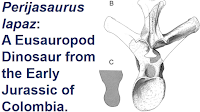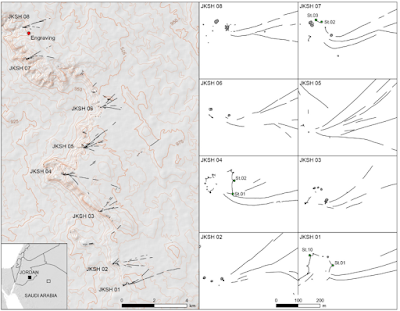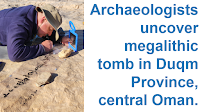The Clarion-Clipperton Zone is an area of the Pacific seafloor bounded by the Clarion and Clipperton fracture zones to the north and south, and the 115°W and 160°W longitude lines. It has an area of about 6 million km², making it roughly twice the size of India, and is located between Hawai'i, Kiribati, and Mexico, but lies entirely outside the jurisdiction of any nation. Throughout this region the seafloor is between 4000 and 6000 m deep, and mostly covered with muddy sediments with a scattering of Potato-sized polymetalic nodules, making the zone attractive to prospective deep-sea miners. The seafloor here is known to host a diverse community of benthic organisms, albeit at a much lower density than is found on the continental shelves or in coastal regions.
The Clarion-Clipperton Zone has been explored for mineral extraction since the 1960s, a process formalized by the formation of the International Seabed Authority in the 1980s, although the possibility of actual mining operations is only becoming possible now. There are currently 17 mining concessions granted within the Clarion-Clipperton Zone, covering an area of about 1.2 million km².
Despite decades of exploration work being carried out within the Clarion-Clipperton Zone, very little taxonomic work has been carried out, with large-scale environmental surveys in the 1970s, 1980s and 1990s producing lists of informally named taxa only; i.e. differentiated by morphological or molecular data, but not formally described. This presents challenges for anyone trying to understand the biodiversity of the region, particularly as deep ocean benthic environments are known to be rich in cryptic species, as the constraints of the environment push members of different taxonomic groups towards similar morphologies and lifestyles.
To make matters worse, the data that has been collected isn't to any method, with sampling and data recording being carried out in different ways in different studies. Furthermore, many studies that have been carried out within the Clarion-Clipperton Zone have concentrated on particular taxa, ecological groups or size classes, and have usually covered only small parts of the zone. This greatly hampers the establishment of any overall understanding of biodiversity within the region, making to almost impossible to come up with a coherent environment management policy plan. Without any meaningful understanding of the biodiversity of the area, it is essentially impossible to calculate the range or environmental requirements of individual species, nor to tell which species are common and widespread and which are rare and tied to very specific environments.
In a paper published in the journal Current Biology on 25 May 2023, Muriel Rabone of the Deep-Sea Systematics and Ecology Group at the Natural History Museum, Joris Wiethase of the Department of Biology of the University of York, Erik Simon-Lledo of the National Oceanography Centre, Aidan Emery, also of the Deep-Sea Systematics and Ecology Group at the Natural History Museum, Dan Jones, also of the National Oceanography Centre, Thomas Dahlgren, of the Department of Marine Sciences at the University of Gothenburg, and the Norwegian Research Centre, Guadalupe Bribiesca-Contreras, again of the Deep-Sea Systematics and Ecology Group at the Natural History Museum, Helena Wiklund, again of the Deep-Sea Systematics and Ecology Group at the Natural History Museum and the Norwegian Research Centre, Tammy Horton, again of the National Oceanography Centre, and Adrian Glover, once again of the Deep-Sea Systematics and Ecology Group at the Natural History Museum, present a synthesis of Metazoan biodiversity within the Clarion-Clipperton Zone, aimed to convey the best currently available information to all stakeholders, ahead of the start of any mining operation within the zone.
Rabone et al. synthesized data from seven different data sources, producing over 100 000 individual records. Although these were assembled over several decades, the majority of the taxonomic work is recent, and much less than five years old. A total of 219 taxa new to science (including species, genera, and families) have been described from the Clarion-Clipperton Zone, again mostly in the recent past; only seven were described prior to the year 2000. The checklist of Animal species assembled by Rabone et al. includes 436 species found within the Clarion-Clipperton Zone, including 185 which were first described from within the zone (31 new genera and 3 new families were also described from within the zone). Of these 185 species, only six have subsequently been discovered living in other areas; two Sea Cucumbers, a Nematode, a Carnivorous Sponge, a Crinoid, and an Antipatharian Coral.
A total of 27 phyla of Animals have been recorded in the Clarion-Clipperton Zone, as well as 49 classes, 163 orders, 501 families, and 1119 genera. Of the 436 Animals identified to species level, 185 (i.e. 42%) have been identified on the basis of both molecular and morphological data, with 217 (50%) identified only by their morphology. The remaining 34 species were listed with no method of identification given. Of the species described from the Clarion-Clipperton Zone, 51% were identified solely on the basis of morphology; this rises to 86% for meiofauna (species larger than 150 μm but smaller than 300 μm). For the most abundant groups within the Clarion-Clipperton Zone, Tanaid and Isopod Crustaceans and Polychaete Worms, 23% of the species identified were originally described from outside the zone, including some species from other ocean basins. A total of 5367 unnamed species were recorded, although 3.9% of these are species Rabone et al. believe to have been named erroneously; if these are taken out of the equation the number is 5142.
Based upon identified species, the most abundant taxa in the Clarion-Clipperton Zone are the Arthropoda, comprising 27% of the total, followed by the Annelida, 18%, Nematoda, 16%, Echinodermata, 13%, and Porifera, 7%. The proportions appear to be similar for unnamed species, albeit with a slightly higher proportion of Annelid Worms. According to the World Register of Deep-Sea Species (part of the World Register of Marine Species) there are currently 36 579 named species of Animal known to live at depths of greater than 500 m, of which 31% belong to the Phylum Arthropoda, 17% to the Phylum Mollusca, 15% to the Phylum Chordata, and 10% each to the phyla Annelida and Echinodermata. Thus the Clarion-Clipperton Zone appears to have a significantly higher proportion of Annelid, Nematode, and Echinoderm species than the deep ocean as a whole, and slightly higher proportions of Sponges and Bryozoans than the deep ocean as a whole. Conversely, the Clarion-Clipperton Zone has a lower proportion of Molluscs, particularly Gastropods, and Chordates, particularly Teleost Fish. Also notable is that Holothurans (Sea Cucumbers) make up a higher proportion of the total number of Echinoderm species in the Clarion-Clipperton Zone, while Asteroids (Starfish) and Ophiuroids (Brittle Stars) are less numerous. There are also groups, such as the Pycnogonids (Sea Spiders) for which there are no recorded named species within the Clarion-Clipperton Zone, although unnamed species are known.
Classed by size, 50% of identified species from the Clarion-Clipperton Zone are macrofauna (larger than 300 μm but smaller than 10 mm), 28% are megafauna (larger than 10 mm), and 22% are meiofauna (smaller than 300 μm but larger than 150 μm). This reflects the nature of studies carried out in the area, with 46% concentrating on macrofauna, 30% on megafauna, and 22% on meiofauna, What is notable about the Clarion-Clipperton Zone is the nature of the substrate, with the combination of soft mud and hard nodules, meaning that 14% of named species and 13% of unnamed species are hard-substrate species living on nodules, while the remainder are soft substrate species living on or in the mud. Several species of megafauna (Cnidarians and Sponges) have recently been described from nodules in the Clarion-Clipperton Zone, though there have only been two quantitative studies of macrofaunal nodule dwellers to date, revealing that the majority of these are undescribed Sponges and Bryozoans. One monograph on nodule Bryozoans in the Clarion-Clipperton Zone has been published, which described sixteen new species, nine new genera, and two new families.
Rabone et al. used several different mathematical models to attempt to predict the total number of Animal species within the Clarion-Clipperton Zone, producing answers which ranged from 6109 to 8514, with between 947 and 1034 genera, and 406-544 families. Thus, although there are clearly many unidentified species left within the zone, the picture appears to be much more complete for higher level taxonomic categories.
Rabone et al. estimate that 92% of species within the Clarion-Clipperton Zone remain unidentified. The proportion of unidentified species is thought to vary considerably from group to group, with 99.4% of Taneid Crustacean species though to be unidentified, along with 96.6% of Isopod Crustaceans and 87% of Polychaete Worms. An estimate of 92% of species being unidentified is also in line with higher estimates for the proportion of unidentified species in the total ocean.
Sampling efforts cross the Clarion-Clipperton Zone have note been even, with the majority of studies having been carried out in the central and eastern parts of the area, while portions of the zone remain almost totally unexplored. There is a similar unevenness in the depth of sampling, with the majority of sampling having taken place at depths of about 4200 m and about 5000 m. Both the depth and geographical data relate to areas where mining exploration contracts have been granted, mostly in the east-central part of the zone. Data on numbers do not exist for all recorded species, but where they do, 37% are known only from a single specimen, which implies significant undersampling. Again, 91% of the single specimen species have been recorded in areas where mining concessions have been granted, with the area known from Areas of Particular Environmental Interest. Overall, 95% of species recorded (named and unnamed) are unknown in the declared Areas of Particular Environmental Interest.
Rabone et al.'s study provides an estimate of the known and unknown species richness for benthic Animals across the Clarion-Clipperton Zone. This shows sampling to be very incomplete at the species level, but likely to be complete or very nearly complete at the family level.
Diversity estimates can be seriously distorted when specimens of the same species are recorded as different species, a problem Rabone et al. believe was present in one of the sources they consulted,, the DeepData Database of the International Seabed Authority, where they suggest about a quarter of records represent duplicates. Further duplications could potentially be present and undetected within the remaining data.
Rabone et al. note that some regions of and habitats within the Clarion-Clipperton Zone remain almost totally unsampled. There have been, for example, only six studies of rocky outcrops and seamounts within the zone, habitats which are known to typically have very different faunas to other deep sea environments. The Clarion-Clipperton Zone is a highly variable area compared to much of the oceans' abyssal plains, with numerous rocky outcrops, and extensive fields of polymetallic nodules. Such a diverse environment ought to support a diverse community of organisms, with a lack of sampling almost certainly leading to a significant deficiency in the available data on biodiversity in the region.
A number of other factors could potentially cause estimates of species richness to be inflated or underestimated. Notably, within the Clarion-Clipperton Zone, many species have been recorded by informal names only, allowing for multiple synonyms for a single species, and variation in naming practices over time. A proportion of the informal names within the consulted data sources will no doubt be wrong; but it is impossible to do more that estimate this inaccuracy.
For the most abundant groups within the Clarion-Clipperton Zone, Tanaid and Isopod Crustaceans, 23% of identified species have type localities outside the zone, many within other ocean basins. These groups are known to include many widespread species, but it is still quite possible that this record could include many cryptic species (i.e. species which appear morphologically identical, but which are genetically distinct) or species complexes (groups of closely related cryptic species), which are known to be particularly prevalent in the deep oceans. Resolving this would require genetic sampling of both specimens from the type locality and the Clarion-Clipperton Zone population(s); without this the diversity of these groups may be underestimated by 20-25%. Most of the new species described from within the Clarion-Clipperton Zone have been described since the advent of molecular taxonomy as a standard method, but 51% are named from morphological data only. This is particularly true for smaller species, with 86% of meiofaunal species described from the Clarion-Clipperton Zone described only on the basis of morphological data.
Rabone et al. suspect that their figure of 92% of species being unidentified within the Clarion-Clipperton Zone includes an overestimation of the number of species due to different informal names being used for the same species, but an underestimation of the number of species due to undersampling of some regions, and the presence of cryptic species.
Rabone et al's study produces a species composition for the Clarion-Clipperton Zone with differs from the World Register of Deep-Sea Species estimate for the deep ocean, even at phylum level. Some of the trends produced in the study are likely to be real, such as the higher diversity of Sea Cucumbers in the World Register of Deep-Sea Species than in the deep ocean as a whole, but others are likely to be the result of problems such as uneven sampling within the zone and a shortage of experts working on some taxonomic groups. Rabone et al. also note that the majority of species identified within the Clarion-Clipperton Zone, both named and unnamed, fall into the macrofauna category, which has been the subject of the most studies within the region. Megafauna, which are hard to sample using remote-operated vehicles, are rarely collected, and therefore seldom identified. Meiofauna are thought to make up the majority of the biomass of organisms in the deep sea, but are also thought to be significantly undersampled. This situation is not unique to the Clarion-Clipperton Zone, and the World Register of Deep-Sea Species probably also contains significant biases, given the lack of sampling across much of the deep ocean floor.
Very few estimates of biodiversity across large areas of the deep ocean floor have been carried out. A study of the deep sea floor of the Southern Ocean found 674 species of Isopod Crustacean, 87% of which were new to science. Rabone et al. estimate that 96% of Isopod species within the Clarion-Clipperton Zone will be undescribed from elsewhere, i.e. the 23 species already described from within the zone, plus an estimated 474 species yet to be described. Estimates of the total number of marine Animal species range from 300 000 (likely to be a significant underestimate) to 10 million (likely to be a significant overestimate). Rabone et al. estimate the proportion of undescribed species within the Clarion-Clipperton Zone at 92%, while the number for the total deep ocean has been estimated at 87%, a comparable figure. The named species within the Clarion-Clipperton Zone currently represent about 1% of the total estimated deep sea biodiversity for the planet, while the total number of species probably represents about 15% of that total.
The biodiversity of the Clarion-Clipperton Zone is currently significantly under-described. Thirty one new genera and three new families have been described from the zone to date, and Rabone et al. are aware of several new general and at least one new family of Animals- awaiting description from samples collected within the zone. The area clearly contains a significant amount of unique evolutionary lineages. The Clarion-Clipperton Zone is known to be home to significant Echinoderm novelty not known from elsewhere, and the same is probably true of other groups. Life histories unknown from elsewhere have also been recorded within the Clarion-Clipperton Zone, including organisms associated with the stalks of Sponges, as well as Nematodes, Isopods, and Polychaetes from groups otherwise associated with infaunal sediment-dwelling lifestyles which have adapted to live on the hard surfaces of polymetallic nodules. Suspension feeders are also particularly likely to be associated with nodules, with 60-80% of megafauna (the size range dominated by suspension feeders) within the Clarion-Clipperton Zone living on the surface of nodules. How these nodule-dwelling species (and species living in the nearby sediments) would be affected by deep-sea mining efforts targeting the nodules has never been the subject of any specific study. Little is known about the life-histories of these nodule-dwelling organisms, and any such study is likely to be extremely difficult, given that a third of such species have been observed only once.
Studies of individual taxa within the Clarion-Clipperton Zone have estimated that the proportion of undescribed taxa is in excess of 80%. Rabone et al.'s study provides the first estimate of the area's total biodiversity, and estimates the number of undescribed species to be between 88% and 92%. Despite decades of study in the region, taxonomic studies have only recently begun, leaving much work to be completed, something which Rabone et al. should be treated as a matter of some urgency, given the likelihood of mining operations commencing in the zone in the near future. Biodiversity is often assumed to be low in deep marine environments, but this assumption is at least partly driven by low sampling levels rather than low diversity. The United Nations Convention on the Law of the Sea states that marine mining efforts should cause 'no serious harm', but this term is not defined, and in the absence of reliable data on deep marine ecosystems, could easily become meaningless.
See also...
Follow Sciency Thoughts on Facebook.
Follow Sciency Thoughts on Twitter.



















































